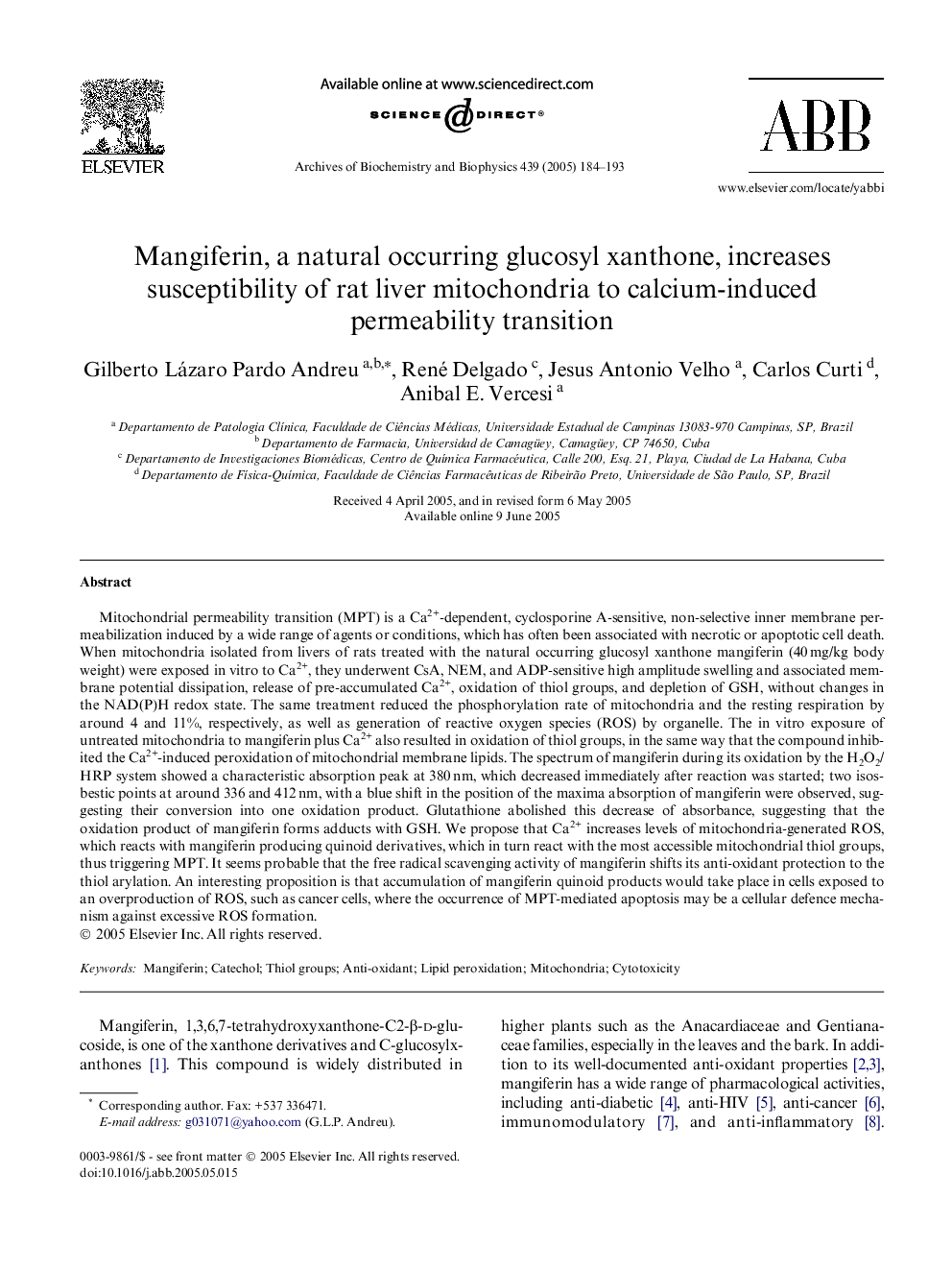| Article ID | Journal | Published Year | Pages | File Type |
|---|---|---|---|---|
| 9882166 | Archives of Biochemistry and Biophysics | 2005 | 10 Pages |
Abstract
Mitochondrial permeability transition (MPT) is a Ca2+-dependent, cyclosporine A-sensitive, non-selective inner membrane permeabilization induced by a wide range of agents or conditions, which has often been associated with necrotic or apoptotic cell death. When mitochondria isolated from livers of rats treated with the natural occurring glucosyl xanthone mangiferin (40Â mg/kg body weight) were exposed in vitro to Ca2+, they underwent CsA, NEM, and ADP-sensitive high amplitude swelling and associated membrane potential dissipation, release of pre-accumulated Ca2+, oxidation of thiol groups, and depletion of GSH, without changes in the NAD(P)H redox state. The same treatment reduced the phosphorylation rate of mitochondria and the resting respiration by around 4 and 11%, respectively, as well as generation of reactive oxygen species (ROS) by organelle. The in vitro exposure of untreated mitochondria to mangiferin plus Ca2+ also resulted in oxidation of thiol groups, in the same way that the compound inhibited the Ca2+-induced peroxidation of mitochondrial membrane lipids. The spectrum of mangiferin during its oxidation by the H2O2/HRP system showed a characteristic absorption peak at 380Â nm, which decreased immediately after reaction was started; two isosbestic points at around 336 and 412Â nm, with a blue shift in the position of the maxima absorption of mangiferin were observed, suggesting their conversion into one oxidation product. Glutathione abolished this decrease of absorbance, suggesting that the oxidation product of mangiferin forms adducts with GSH. We propose that Ca2+ increases levels of mitochondria-generated ROS, which reacts with mangiferin producing quinoid derivatives, which in turn react with the most accessible mitochondrial thiol groups, thus triggering MPT. It seems probable that the free radical scavenging activity of mangiferin shifts its anti-oxidant protection to the thiol arylation. An interesting proposition is that accumulation of mangiferin quinoid products would take place in cells exposed to an overproduction of ROS, such as cancer cells, where the occurrence of MPT-mediated apoptosis may be a cellular defence mechanism against excessive ROS formation.
Related Topics
Life Sciences
Biochemistry, Genetics and Molecular Biology
Biochemistry
Authors
Gilberto Lázaro Pardo Andreu, René Delgado, Jesus Antonio Velho, Carlos Curti, Anibal E. Vercesi,
